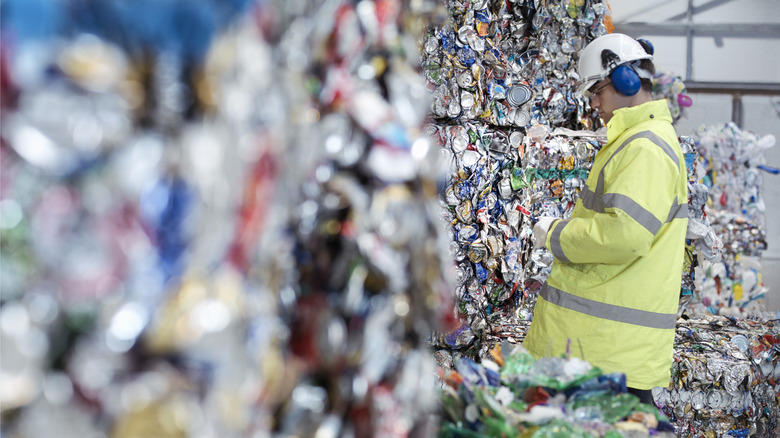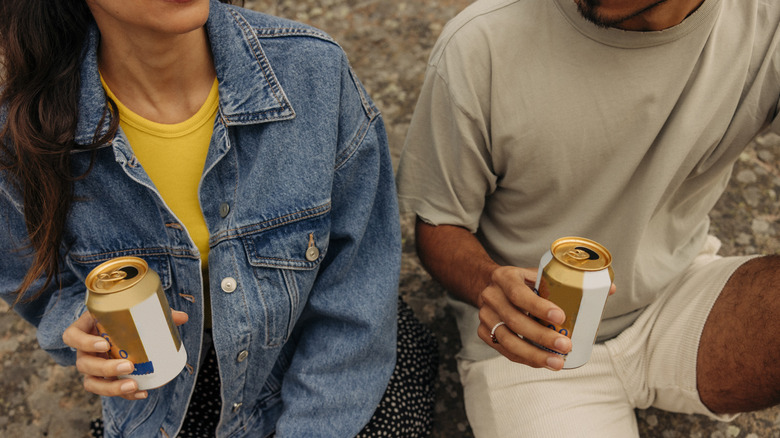Why You Should Stop Crushing Empty Soda Cans Before Putting Them In Your Recycling Bin
Recycling is one of the easiest ways to make your home more eco-friendly, but it needs to be done right. With just a little bit of effort and knowledge, you can significantly impact the success of recycling practices in your community, ensuring the majority of waste is actually given a new life instead of rotting away in a landfill. A quick and easy step towards this is refraining from crushing you metal soda cans.
Flattened aluminum cans may seem more energy efficient by taking up less space and therefore demanding less trips from your residential curbside recycling services, but they could actually be jeopardizing the sorting system at the recycling center. Their two-dimensional shape could confuse automatized machines that separate mixed recycling, landing cans in the wrong pile and contaminating entire batches of waste. And contaminated waste is never actually recycled. In order to avoid this, it's vital that you understand how the recycling center that services your area operates before parting ways with your empty aluminum soda cans.
How to properly recycle metal cans
The best way to deal with waste is by not creating it in the first place. For example, why toss aluminum cans when you could reuse them for sweet storage instead? Still, if you've ran out of space for recycled arts and crafts, the next step is to research the waste sorting system in your municipality.
Assess whether you're dealing with single-stream, dual-stream, or multi-stream recycling. The first is still the most common in the U.S., but it's being slowly replaced by the other two. Single-stream recycling means all your recyclable waste is disposed of together, also known as mixed recycling. This makes recycling all that simpler, hopefully motivating a larger number of people to adopt it into their lifestyles. If this is the case where you live, you should be extra careful to avoid crushing any container that was originally three-dimensional, including, but not limited to, metal cans.
When mixed recycling reaches the sorting center, it is typically sent to a ballistic separator. This machine sorts waste based on shape and density with the use of oscillating paddles and plates, so that flat objects like carboard (and your wrongly crushed cans) get sent one way, and bulky objects (like bottles and undamaged cans) get sent another. Dual-stream and multi-stream recycling helps prevent errors like these from happening by asking the public to separate their waste before it even reaches sorting centers. There shouldn't be an issue with crushing cans if you practice this kind of recycling, but until you're sure how your waste is handled, don't risk it!

